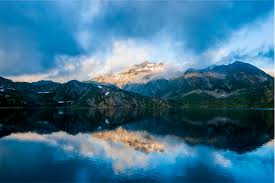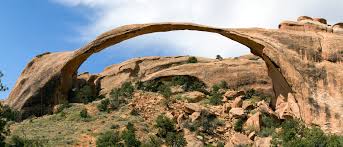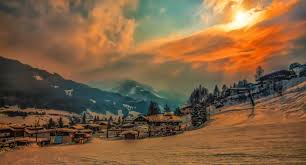In the last interview before his death, Irish philosopher and poet, John O’Donohue and Krista Tippet explored the power of landscape, something that we have written here about often. O’Donohue acknowledges that a beautiful landscape has the power to open one up to possibilities and creativity that are larger than one believed about oneself.  He also acknowledges that the often dismal and depressing landscapes that we require the poor to live in within inner cities can have the opposite effect, convincing human beings that they are less capable and creative than they might once have believed of themselves. Even as I prepared to write this, I opened shades that had been drawn the day before so that I could look out on the woods behind our house while working at my computer. The landscape around us touch us, communicates with us and shapes us into who we are becoming.
He also acknowledges that the often dismal and depressing landscapes that we require the poor to live in within inner cities can have the opposite effect, convincing human beings that they are less capable and creative than they might once have believed of themselves. Even as I prepared to write this, I opened shades that had been drawn the day before so that I could look out on the woods behind our house while working at my computer. The landscape around us touch us, communicates with us and shapes us into who we are becoming.
There is a cultural landscape that is always with us, always touching us, always  communicating with us and always shaping us into being. Surely this cultural landscape is made up of the land, the trees and the sky, bodies of water and the ways in which these things intermingle before us. It includes the buildings and shapes of buildings that we place in that landscape, but it also includes all of the other living beings, too: human beings, known and unknown to us, animals, wild and domestic, insects, the temperature of the air, the weather, all in some ways an orchestration of life and being intermingling with our perceptions, thoughts, feelings and actions.
communicating with us and always shaping us into being. Surely this cultural landscape is made up of the land, the trees and the sky, bodies of water and the ways in which these things intermingle before us. It includes the buildings and shapes of buildings that we place in that landscape, but it also includes all of the other living beings, too: human beings, known and unknown to us, animals, wild and domestic, insects, the temperature of the air, the weather, all in some ways an orchestration of life and being intermingling with our perceptions, thoughts, feelings and actions.
The known aspects of landscape confirm what we already know and believe about ourselves (for good and ill). The unknown configurations of landscape–suddenly new  weather formations, suddenly unexpected people or animals, suddenly new terrain that we have not seen before–have the power to stop us in our tracks. They make us hold our breath, and then breathe deeply. They give us moments within moments to ponder what in time just seconds before had been impossible to ponder: who we are, what this world is, how we interact with it all, what and whom we fear, what is thrilling and beautiful, horrible and ugly.
weather formations, suddenly unexpected people or animals, suddenly new terrain that we have not seen before–have the power to stop us in our tracks. They make us hold our breath, and then breathe deeply. They give us moments within moments to ponder what in time just seconds before had been impossible to ponder: who we are, what this world is, how we interact with it all, what and whom we fear, what is thrilling and beautiful, horrible and ugly.
Landscape shapes us. It is constant, evolving and always possibly brand new. Most days,  our landscapes are predictable and reliable–quite like culture and tradition. But within each day comes the possibility of a new entry into the landscape, and then, we are changed.
our landscapes are predictable and reliable–quite like culture and tradition. But within each day comes the possibility of a new entry into the landscape, and then, we are changed.
Bob Patrick
